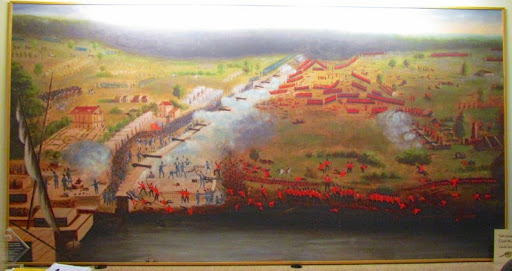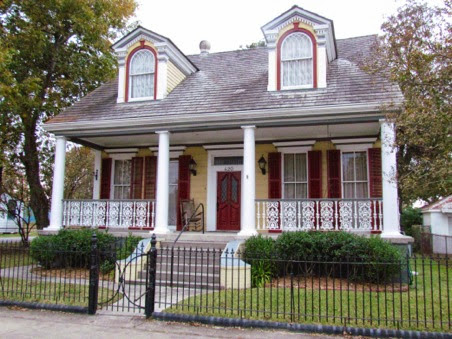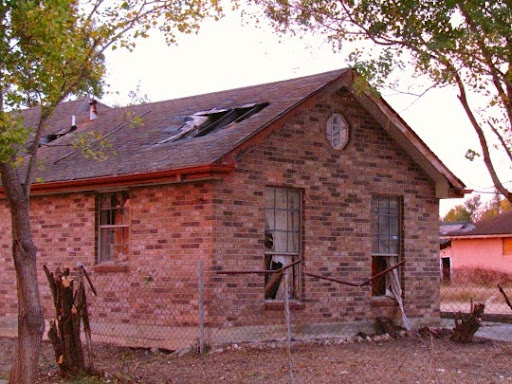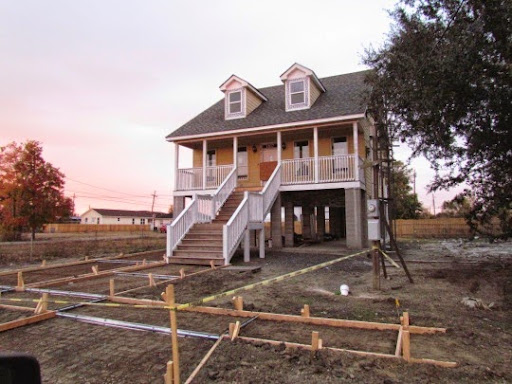Ok, we’ve got the dry ice in the refrigerator and it’s time for a road trip - hmmm - maybe only a short road trip like the 11 miles to the Chalmette Battlefield where the Battle of New Orleans was. To get in the mood for this: pretend that you are an American history teacher in Arkansas and need to interest your students in the War of 1812.
‘Ah, why do we have to learn about that?’
‘Didn’t we just fight the British, why are we fighting them again?’
‘I get the two wars mixed up.’
‘Which one did Washington fight in?’
So, how about writing a song about the battle? And, let’s call it the ‘Battle of New Orleans’, put it to an old fiddle tune called ‘The 8th of January’, add some words and teach the battle that way? That’s just what Jimmy Driftwood did. Little did he know that Johnny Horton, Johnny Cash, the Nitty Gritty Dirt Band and others would make a hit out of it. Not only teach your students history but get royalties in the process. Good ideal. And, don’t we all know the words to this song? As we were driving home, I sang the first 2 lines and Gary chimed in with the next two. Between us both, we knew most of the words, just not in the right order.
Wait a minute now, I’ve got the words printed here but, before you go any further, close your eyes and try to sing the song.
You remembered quite a bit didn’t you? Well, only if you’re as old as Gary and I.
Lyrics to The Battle of New Orleans
written by Jimmy Driftwood
sung by Johnny Horton
(c) 1991 Sony Music Entertainment Inc.
In 1814 we took a little trip
Along with Colonel Jackson down the mighty Mississip.
We took a little bacon an' we took a little beans
And we caught the bloody British at the town of New Orleans.
Refrain:
We fired our guns an' the British kept a'comin'.
There wasn't nigh as many as there was awhile ago.
We fired once more an' they begin to runnin'
Down the Mississippi to the Gulf of Mexico.
We looked down the river an' we seed the British comin',
There must a'been a hundred of 'em beatin' on the drum.
They stepped so high an' they made their bugles ring,
We stood beside our cotton bales an'didn't say a thing.
Refrain
Ole Hickory said we could take 'em by surprise,
If we didn't fire our muskets 'til we looked 'em in the eyes.
We held our fire 'til we seed their faces well,
Then we opened up our squirrel guns an' really gave 'em ...well!
Refrain
Yeah, they ran through the briars an' they ran through the brambles
An' they ran through the bushes where the rabbits couldn't go.
They ran so fast that the hounds couldn't catch 'em
Down the Mississippi to the Gulf of Mexico.
We fired our cannon 'til the barrel melted down,
So we grabbed an alligator an' we fought another round.
We filled his head with cannon balls an' powdered his behind,
An' when they touched the powder off, the 'gator lost his mind.
Johnny Horton had a hit with this song in 1959 but I like the title to his previous 1959 song: ‘When It’s Springtime in Alaska, It’s 40 Below.’
Nice smaller National Battlefield but the displays inside are very good. British and American uniforms and accoutrements: guns, ammo, silverware etc.
The Americans, with 4000, mainly inexperienced, were outnumbered 2 - 1 since the British had an experienced, battle-hardened army of 8000 but, when the battle was over, the British had lost 2000 while the Americans lost only 20. But it was the British who attacked the Americans behind well-fortified lines with lots of artillery that just shredded the British lines as they attacked. Here’s a picture of the mural on the wall in the Visitor’s Center. I probably don’t have to point out the British attacking across a bare field nor the American lines behind their breastworks firing at will at the advancing British. The British bravely attacked but were demolished.

And, even though the battle happened after the peace treaty had been signed, it solidified our ownership of the Louisiana Purchase, established our presence at the mouth of the Mississippi, made other nations sit up and notice this new country and made a national hero out of Andrew Jackson.
We walked the battlefield since we needed our daily walk and also walked through the National Cemetery next to the battlefield.
But, hey, we’ve still got the ‘Prettiest Painted Houses in America’ adventure and a sad drive through the devastated Ninth Ward to round out our day. The Prettiest Painted Houses are in the Old Arabi district which is east of New Orleans. It used to be plantation lands and, when New Orleans banned stockyards from its city limits, they all moved to Arabi. These have been replaced by the Domino Sugar Refinery which is still operating today. In 2012 Old Arabi was named one of America’s Prettiest Painted places in a nationwide search conducted by the Paint Quality Institute of America ‘for the stunning use of color on the area’s elaborate historical homes and buildings.’
And, we certainly found some beautifully painted homes - well, it helped that there was a small sign in each front yard identifying this house as one of the “Prettiest Painted Place.’ Nothing like a good sign. But, we really recognized these homes because they were really stunning in their paint schemes. Not difficult to recognize those that helped the town win its title. They were stunning, even though it was overcast and heading towards evening.



Finally, to end the day on a very somber note, we drove through the Lower Ninth Ward to get back to our RV park. Some homes have been beautifully restored, some abandoned (I have to think that this was one of the roofs that was broken to get to the people who had gotten into their attic to escape the rising water),

some torn down and replaced with homes on stilts

and others demolished leaving only an empty lot. You can close your eyes and envision a vibrant community with kids playing baseball, parents coming home from work and the smells of dinner wafting in the evening breeze. But, much of that is gone now. Will the Lower Ninth Ward ever be a complete community again? Many are working to see that it does but it is a work in progress and the same geological problem remains: they are below sea level.
Back in the RV, my brother called to tell us that ISU (#13) was playing basketball on TV. Usually ISU is on TV when they play one of the Big 12 like Texas, Oklahoma, U of Oklahoma, Baylor - you know, the ones in the top ten in football. But Iowa State has an excellent basketball coach and should contend again. Last year they made the Sweet 16. Who knows this year?

No comments:
Post a Comment